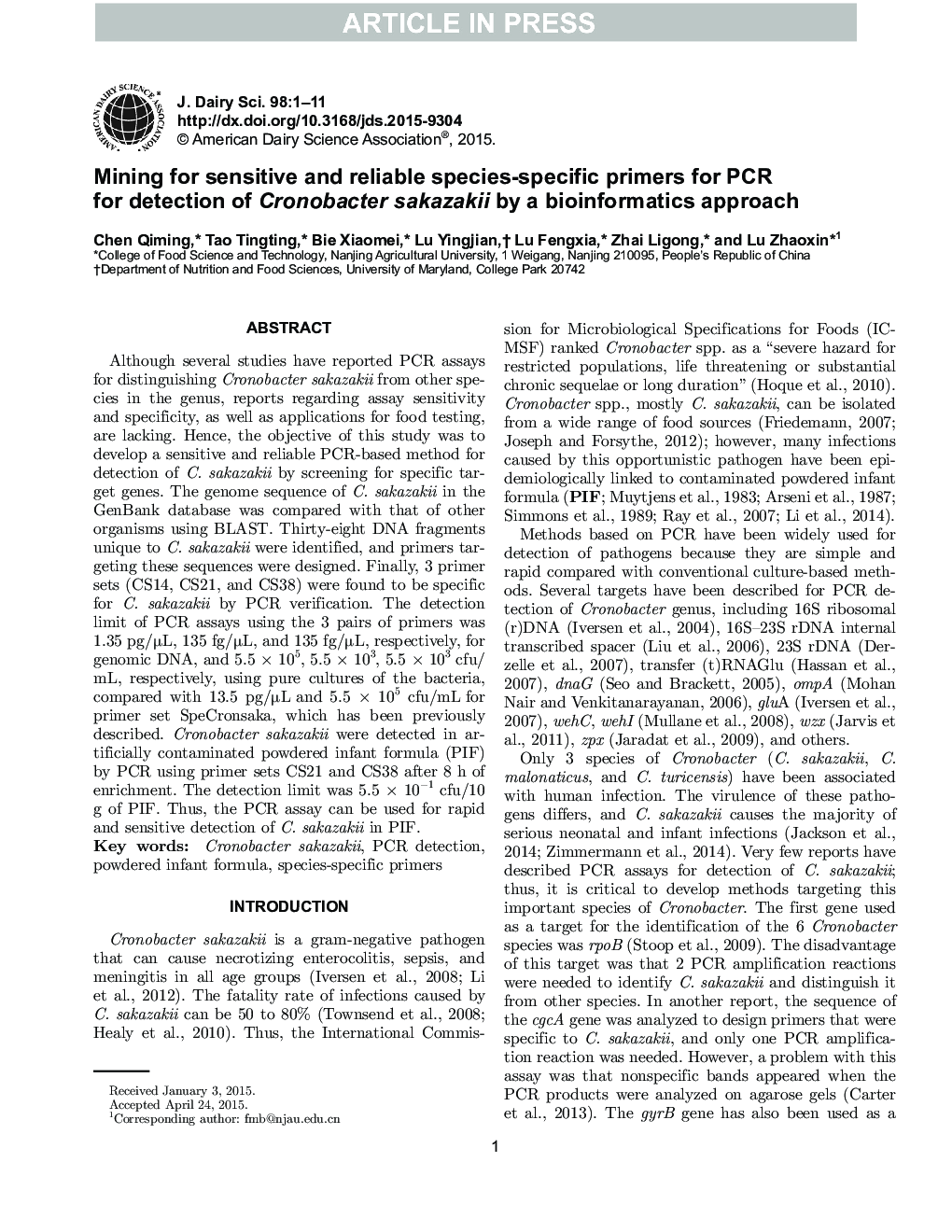| Article ID | Journal | Published Year | Pages | File Type |
|---|---|---|---|---|
| 10974178 | Journal of Dairy Science | 2015 | 11 Pages |
Abstract
Although several studies have reported PCR assays for distinguishing Cronobacter sakazakii from other species in the genus, reports regarding assay sensitivity and specificity, as well as applications for food testing, are lacking. Hence, the objective of this study was to develop a sensitive and reliable PCR-based method for detection of C. sakazakii by screening for specific target genes. The genome sequence of C. sakazakii in the GenBank database was compared with that of other organisms using BLAST. Thirty-eight DNA fragments unique to C. sakazakii were identified, and primers targeting these sequences were designed. Finally, 3 primer sets (CS14, CS21, and CS38) were found to be specific for C. sakazakii by PCR verification. The detection limit of PCR assays using the 3 pairs of primers was 1.35 pg/μL, 135 fg/μL, and 135 fg/μL, respectively, for genomic DNA, and 5.5 Ã 105, 5.5 Ã 103, 5.5 Ã 103 cfu/mL, respectively, using pure cultures of the bacteria, compared with 13.5 pg/μLand 5.5 Ã 105 cfu/mLfor primer set SpeCronsaka, which has been previously described. Cronobacter sakazakii were detected in artificially contaminated powdered infant formula (PIF) by PCR using primer sets CS21 and CS38 after 8 h of enrichment. The detection limit was 5.5 Ã 10â1 cfu/10 g of PIF. Thus, the PCR assay can be used for rapid and sensitive detection of C. sakazakii in PIF.
Related Topics
Life Sciences
Agricultural and Biological Sciences
Animal Science and Zoology
Authors
Chen Qiming, Tao Tingting, Bie Xiaomei, Lu Yingjian, Lu Fengxia, Zhai Ligong, Lu Zhaoxin,
